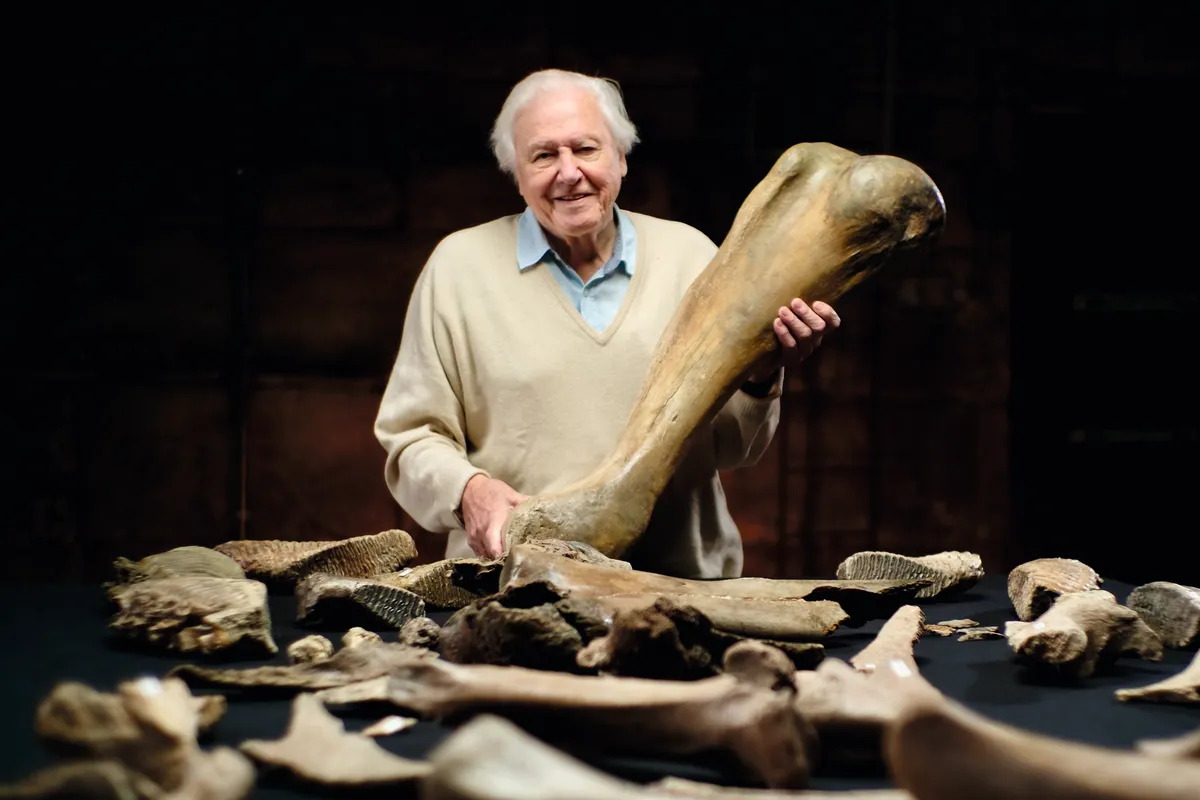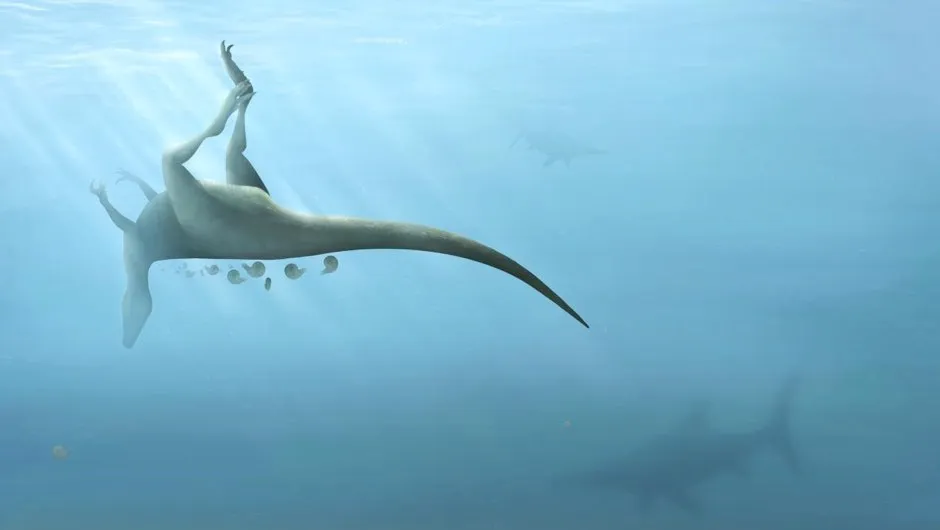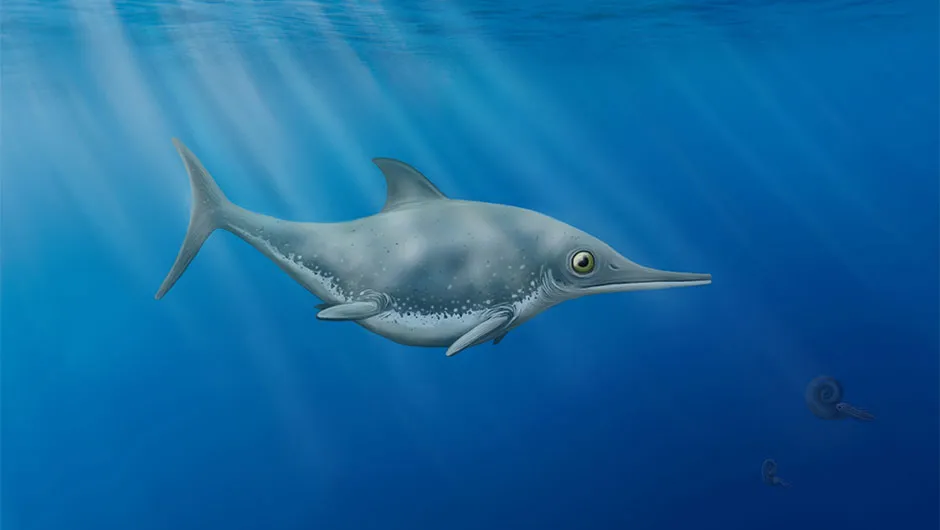The UK’s largest ichthyosaur fossil has been found in a reservoir in Rutland. The marine reptile measures 10 metres long, and weighs over two tonnes.
Ichthyosaurs, which are not dinosaurs, are an extinct group of species that lived between 250 and 90 million years ago. Like whales and dolphins, their ancestors had emerged from the water onto land and later returned, meaning ichthyosaurs breathed air. They lived both along coastlines and in the open ocean, and are believed to have been warm-blooded.
This specimen, a member of the species Temnodontosaurus trigonodon, was discovered by Joe Davis, Conservation Team Leader at Leicestershire and Rutland Wildlife Trust. The team were draining a lagoon island at the reservoir, Rutland Water, for re-landscaping in February 2021 when they found it. They also discovered several other fossils alongside it, including ammonites.
The fossil was excavated in August and September by a team led by ichthyosaur expert Dr Dean Lomax and specialist palaeontological conservator Nigel Larkin. They encased it in plaster of Paris with wooden splints, and lifted it out of the ground to be studied at a research facility.
An episode of the BBC documentary Digging for Britain featuring the Rutland ichthyosaur will be on BBC Two at 8pm on Tuesday 11 January, and later on iPlayer.
4 other fantastic fossil finds from the UK
Swindon mammoth graveyard

In 2017, amateur fossil hunters Sally and Neville Hollingworth discovered a hoard of mammoth bones and tusks in a site that was once the riverbed of the Thames. The find dates back hundreds of thousands of years, and even contains a stone hand axe belonging to an ancient human.
The pair approached biologist Prof Ben Garrod, who put together a team and approached Sir David Attenborough to investigate. The BBC documentary Attenborough and the Mammoth Graveyard, available on iPlayer, follows the team as the excavate the quarry and ask what could have killed the mammoths.
Isle of Wight T. rex relative

A new species discovered on the Isle of Wight in 2019 was a dinosaur in the same family as T. rex, palaeontologists from the University of Southampton believe. The theropod species, which lived in the Cretaceous period, is named Vectaerovenator inopinatus.
Four fossilised vertebrae, believed to be from the same animal, were discovered over the course of three weeks by amateur fossil hunters and handed to the nearbyDinosaur Isle Museum.
Isle of Skye dinosaur hotspot

In the Middle Jurassic Period, a group of dinosaurs walked in mud on what we now call the Isle of Skye. Then, 170 million years later, a storm revealed around 50 preserved footprints. These include the Isle of Skye’s first example of a footprint most likely created by a stegosaurian or plate-backed dinosaur.
Among the tracks are ones left by three-toed carnivores, and ones believed to be left by large-bodied herbivores.
Dorset ichthyosaur

Another species of ichthyosaur was discovered on a beach in Dorset by amateur fossil hunter Dr Steve Etches. The species was called Thalassodraco etchesi, or Etches sea dragon. At only two metres long, it’s the UK’s smallest ichthyosaur specimen by far.
After the creature died, the front half of its body sank into the mud of the seafloor, allowing it to be exceptionally preserved. Even some of its soft tissues remain.